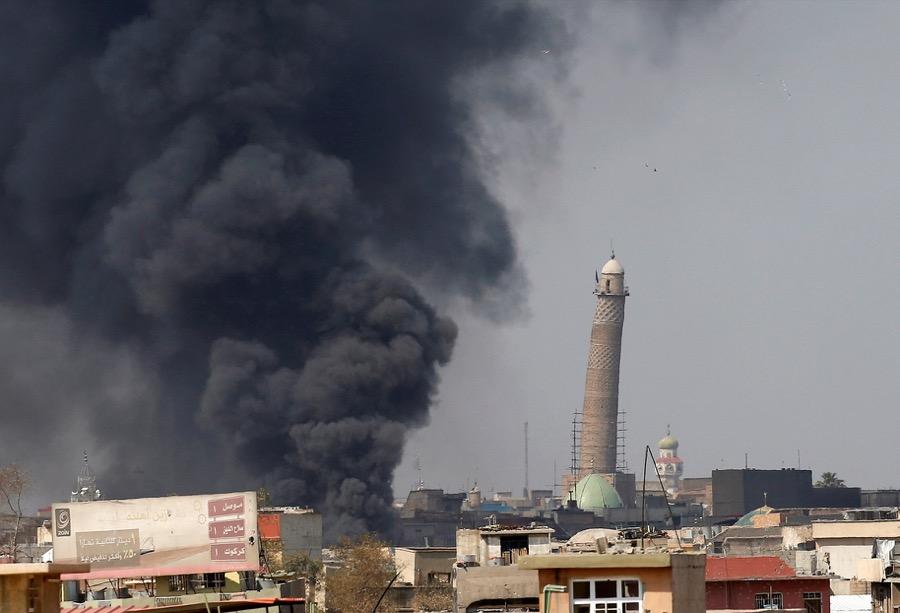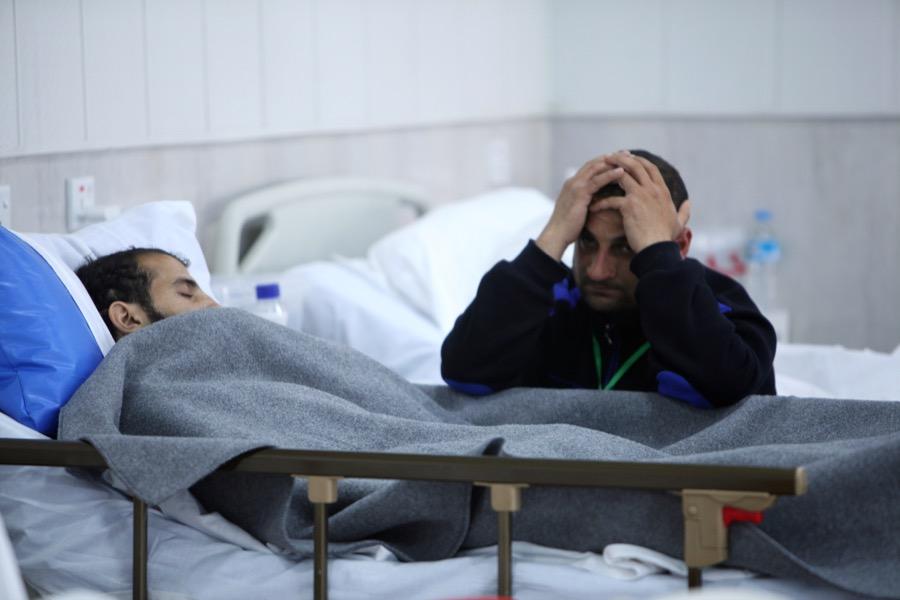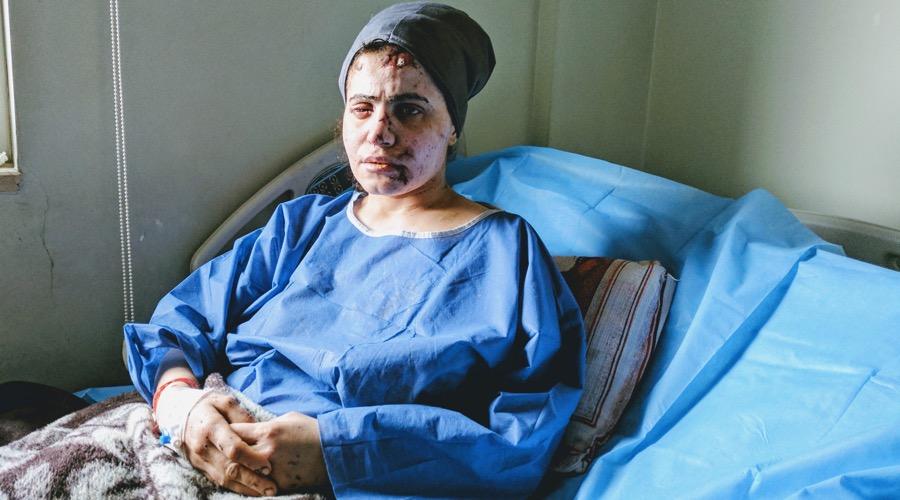‘I saw everything burning’: Iraqi survivors of a suspected US coalition airstrike speak
Lina Shahab is recovering in a hospital in Erbil, northern Iraq, after surviving an airstrike in Mosul.
Lina Shahab turns slowly and painfully in her hospital bed. Her lips are dry and cracked. Her right eye is swollen shut. There is hardly a patch on her skin that is not marked by shrapnel wounds.
“Suddenly, we heard a boom,” she says softly, describing the explosion that put her here.
“I couldn’t see anything. Glass went into my eye. A hole opened up in the floor and I fell through it. I saw everything burning. I saw my aunt and her kids dead on the other side of the room.”
The 30-year-old mother’s injuries are the result of a suspected US-led coalition airstrike on a building full of civilians in al-Jadida, a neighborhood in western Mosul, where Iraqi forces are battling to dislodge ISIS.
Lt. Gen. Steve Townsend, the top US commander in Iraq, acknowledged Tuesday that the coalition “probably had a role” in the al-Jadida strike. He added that ISIS may have used the civilians as human shields.
With emergency workers still identifying the victims, the actual number of dead from the March 17 incident is not yet known, but initial figures suggest that, if confirmed, it would be one of the worst civilian tolls caused by the coalition since the anti-ISIS campaign began in 2014.

In recent weeks, civilian casualties in Mosul have skyrocketed compared with those reported in previous months as US-backed Iraqi forces push into the densely populated neighborhoods of western Mosul. The Old City has become a cauldron of death, with ISIS sniper fire, Iraqi army mortars and coalition airstrikes raining down on residents.
High numbers of alleged US coalition killings of civilians have also been reported this year in Syria and Yemen.
Some are speculating that casualties may be increasing because of a loosening of the rules of engagement by Donald Trump’s administration — something the president advocated during his campaign. That explanation gained traction with Iraqi commanders claiming that calling in airstrikes from the US-led coalition has become easier, and quicker.
But the Pentagon has denied the rules of engagement have changed under Trump.
Quicker airstrike responses could actually be due to a US military directive in December — toward the end of Barack Obama's presidency — aimed at improving coordination between ground forces and air support.
That adjustment followed rule changes in April 2016, when it was reported that the US military would allow airstrikes to target areas even when it risked killing as many as 10 civilians.
Related: New Pentagon rules allow anti-ISIS airstrikes that could cause more civilian deaths
Human shields
How more than 100 people ended up in the same building in Mosul on March 17 is another part of the tragic story. Shahab says she and dozens of other residents were rounded up by ISIS fighters and forced into the two-story home to be used as human shields.
“There were lots of people already inside the house. The room we were in was full of people," she says, as her mother sits at the end of her hospital bed. "They told us to go to the second floor. We stayed there two days. One day we heard a huge boom in the building beside us. We asked them what it was, they told us it was nothing. We thanked God nothing happened to us.”
As fighting raged all around them, and as ISIS snipers moved among the buildings, the strike came. The blast threw Shahab’s body and burst through the floor she was standing on. It was a scene of utter devastation.
“I tried to go outside. Everything was burning. Fire was everywhere. I saw a man, he was shouting ‘Allahu Akbar.’ He helped me to the other side of the street. [ISIS fighters] told us to go to another house. I went there. My husband’s family were all killed. I was wiping my face and I was covered in blood. Everyone was covered in blood,” Shahab says.
It would be four days until the Iraqi army pushed ISIS back and took Shahab and others out of the city and about 50 miles east to the Kurdish city of Erbil for treatment.
Shahab lost her aunt and her sister-in-law. She says she thinks her husband and two of her three sons made it. The third, she is not sure.
“I have three kids. Two of them are full of shrapnel. But the other one I don’t know where he is. His name is Abdul Rahman. He is a big boy. If you look at him, you would think he is 18. But he is 12. We don’t know anything about him.”
“He is the most handsome of the three,” she adds, before she starts to cry.

Other victims from Shahab’s neighborhood fill the rooms at the Emergency Hospital in Erbil. Their family members wait anxiously in the busy hallways.
Ziad Sleiman, a 35-year-old swimming instructor from western Mosul, is here for his aunt, who was also injured in the strike. He was asked to help dig out survivors and says he was one of the first to reach the scene.
“We discovered a huge numbers of bodies beneath the rubble,” he says. “It was horrible. I didn’t see any ISIS fighters there. They were all civilians.”
He says there was anger and disbelief at the site of the carnage.
“We know that a pilot can tell the difference between an egg and a tennis ball. So we don’t know why it happened. Americans and Iraqis say they came to save people. But we are seeing something different.”
Sleiman describes a grim picture for the civilians trapped in western Mosul.
“We are like the wheat between the millstones. They are killing us.”
Related: President Trump, is it important to you to limit civilian deaths in US military operations? #100Days100Qs
